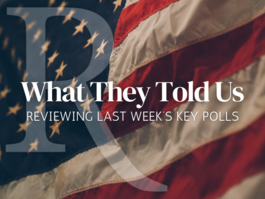Public-sector Unions Bleed Taxpayers to Help Dems
A Commentary By Michael Barone
Growing up in Michigan in the heyday of the United Auto Workers, I long assumed that labor unions were part of the natural order of things.
That's no longer clear. Last month, the Labor Department reported that private-sector unions lost 834,000 members last year and now represent only 7.2 percent of private-sector employees. That's down from the all-time peak of 36 percent in 1953-54.
But union membership is still growing in the public sector. Last year, 37.4 percent of public sector employees were union members. That percentage was down near zero in the 1950s. For the first time in history, a majority of union members are government employees.
In my view, the outlook for both private- and public-sector unionism is problematic.
Private-sector unionism is adversarial. Economic studies show that such unions do extract premium wages and benefits from employers. But that puts employers at a competitive disadvantage. Back in the 1950s, the Big Three auto companies dominated the industry and were at the top of the Fortune 500. Last year, General Motors and Chrysler went bankrupt and are now owned by the government and the UAW. Ford only barely escaped.
Adversarial unionism tends to produce rigid work rules that retard adaptation and innovation. We have had a three-decade experiment pitting UAW work rules against the flexible management of Japanese- and European-owned non-union auto firms.
The results are in. Yes, clueless management at the Detroit firms for years ignored problems with product quality and made bonehead investment mistakes. But adversarial unionism made it much, much harder for Detroit to produce high-quality vehicles than it was for non-unionized companies.
As economist Barry Hirsch points out, non-union manufacturing employment rose from 12 million to 14 million between 1973 and 2006. In those years, union manufacturing employment dropped from 8 million to 2 million. "Unionism," Hirsch writes, "is a poor fit in a dynamic, competitive economy."
Moreover, federal laws passed since the 1950s now protect workers from racial and sex discrimination, safety hazards and pension failure. They don't need unions to do this any more.
Public-sector unionism is a very different animal from private-sector unionism. It is not adversarial but collusive. Public-sector unions strive to elect their management, which in turn can extract money from taxpayers to increase wages and benefits -- and can promise pensions that future taxpayers will have to fund.
The results are plain to see. States like New York, New Jersey and California, where public-sector unions are strong, now face enormous budget deficits and pension liabilities. In such states, the public sector has become a parasite sucking the life out of the private-sector economy. Not surprisingly, Americans have been steadily migrating out of such states and into states like Texas, where public-sector unions are weak and taxes are much lower.
Barack Obama is probably the most union-friendly president since Lyndon Johnson. He has obviously been unable to stop the decline of private-sector unionism. But he is doing his best to increase the power -- and dues income -- of public-sector unions.
One-third of last year's $787 billion stimulus package was aid to state and local governments -- an obvious attempt to bolster public-sector unions. And it was a successful one: While the private sector has lost 7 million jobs, the number of public-sector jobs has risen. The number of federal government jobs has been increasing by 10,000 a month, and the percentage of federal employees earning over $100,000 has jumped to 19 percent during the recession.
Obama and his party are acting in collusion with unions that contributed something like $400,000,000 to Democrats in the 2008 campaign cycle. Public-sector unionism tends to be a self-perpetuating machine that extracts money from taxpayers and then puts it on a conveyor belt to the Democratic Party.
But it may not turn out to be a perpetual-motion machine. Public-sector employees are still heavily outnumbered by those who depend on the private sector for their livelihoods. The next Congress may not be as willing as this one has been to bail out state governments dominated by public-sector unions. Voters may bridle at the higher taxes needed to pay for $100,000-plus pensions for public employees who retire in their 50s. Or they may move, as so many have already done, to states like Texas.
Obama's Democrats have used the financial crisis to expand the public sector and the public-sector unions. But voters seem to be saying, "Enough."
Michael Barone is senior political analyst for The Washington Examiner.
COPYRIGHT 2010 THE WASHINGTON EXAMINER
DISTRIBUTED BY CREATORS.COM
See Other Political Commentaries
See Other Commentaries by Michael Barone
Views expressed in this column are those of the author, not those of Rasmussen Reports.
Rasmussen Reports is a media company specializing in the collection, publication and distribution of public opinion information.
We conduct public opinion polls on a variety of topics to inform our audience on events in the news and other topics of interest. To ensure editorial control and independence, we pay for the polls ourselves and generate revenue through the sale of subscriptions, sponsorships, and advertising. Nightly polling on politics, business and lifestyle topics provides the content to update the Rasmussen Reports web site many times each day. If it's in the news, it's in our polls. Additionally, the data drives a daily update newsletter and various media outlets across the country.
Some information, including the Rasmussen Reports daily Presidential Tracking Poll and commentaries are available for free to the general public. Subscriptions are available for $4.95 a month or 34.95 a year that provide subscribers with exclusive access to more than 20 stories per week on upcoming elections, consumer confidence, and issues that affect us all. For those who are really into the numbers, Platinum Members can review demographic crosstabs and a full history of our data.
To learn more about our methodology, click here.



